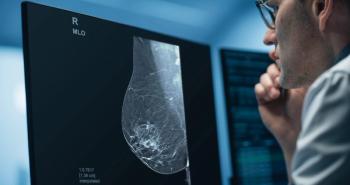Sub-harmonic aided pressure estimation (SHAPE) and sub-harmonic imaging helps predict how well breast cancer patients will responsd to neoadjuvant chemotherapy. In a small study, published in Radiology, 17 women, ages 45 to 70 years, underwent neoadjuvant therapy for breast cancer. They had ultrasound conducted immediately before therapy and at completion of 10%, 60%, and 100% of chemotherapy. Researchers collected radiofrequency data for SHAPE and sub-harmonic imaging during infusion of ultrasound contrast agents. Any signal differences were compared to final treatment responses. According to results, eight patients completed the study. Four left the study, three dropped out after completing 10% of chemotherapy due to disease progression, and data on two were discarded due to technical difficulties. Six patients saw >90% tumor reduction. At completion of 10% chemotherapy, imaging showed the sub-harmonic signal increased more in the tumor than in surrounding areas for responders than in partial or non-responders (mean ± standard deviation, 3.23 dB ± 1.41 vs −0.88 dB ± 1.46 [P = .001], respectively, for SHAPE and 1.32 dB ± 0.73 vs −0.82 dB ± 0.88 [P = .002], respectively, for subharmonic imaging). Additionally, three patients whose tumors increased were predicted to be responders with SHAPE and sub-harmonic imaging with completion of 10% of therapy. Ultimately, researchers wrote, SHAPE and sub-harmonic imaging can predict responses as early as 10% completion of therapy.




























